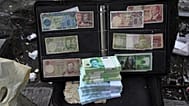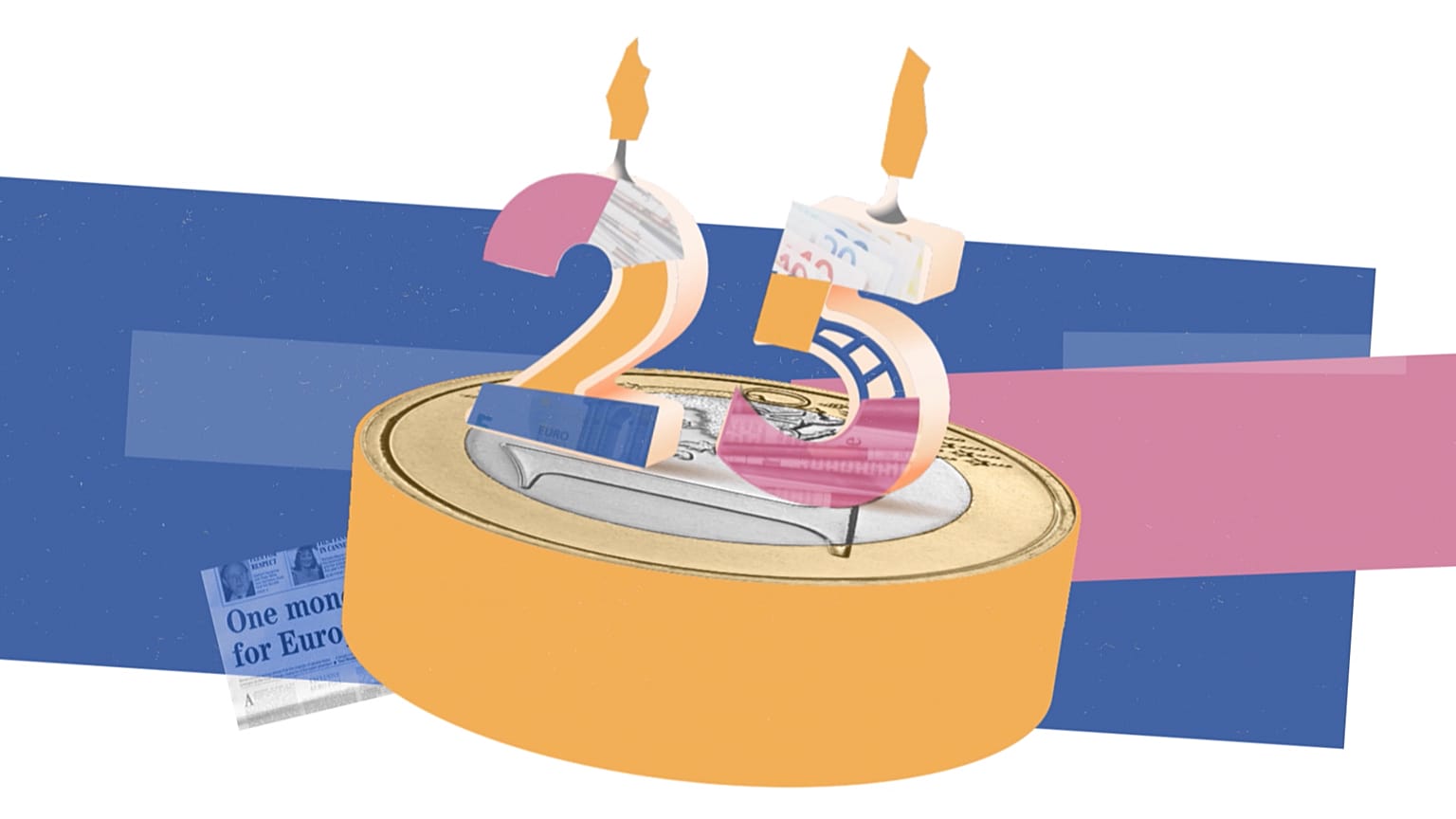In this Real Economy Crash Course, we reflect on 25 years of the euro, from its introduction in 1999 to its significance today and what to expect in the future.
Debt, inflation, wages, and jobs... We know that it's tricky to understand how the economy works. That's why every episode of Real Economy brings you a one-minute Crash Course to bring you quickly up to speed on the big picture. We explain the headline concepts and lay out how public policy is reacting to changing current affairs and economic trends. Watch your one-minute Crash Course in the video above.
How did the euro come about?
After relative international currency stability during the immediate post-Second World War period, turmoil in international currency markets threatened the common price system of the common agricultural policy, a main pillar of what was then the European Economic Community (EEC).
Later attempts to achieve stable exchange rates were hit by oil crises and other shocks until, in 1979, the European Monetary System (EMS) was launched.
But it was under the presidency of Jacques Delors in 1989, that the central bank governors of EU countries produced the 'Delors Report'. That outlined how an Economic and Monetary Union (EMU) could be achieved. The report proposed a three-stage preparatory period from 1990 to 1999 - which European leaders accepted.
The euro became a reality on 1 January 1999. That historic day saw 11 EU countries fix their exchange rates and entrust monetary policy to the ECB, including Austria, Belgium, Finland, France, Germany, Ireland, Italy, Luxembourg, Netherlands, Portugal and Spain.
Nine other countries have joined the eurozone since then: Greece, Croatia, Cyprus, Estonia, Latvia, Lithuania, Malta, Slovakia and Slovenia.
How significant is the euro today?
Today the euro is one of the most important currencies in the world. Around 350 million people use it every day, and apart from the US dollar, no other currency is traded more on global markets.
Furthermore, 60 countries and territories outside the EU - representing 175 million people worldwide - have linked their currency directly or indirectly to the euro.
Aside from being a tangible sign of European identity, the euro benefits consumers as prices can be compared between countries, thereby boosting business competition.
The euro also makes it easier, cheaper and safer for businesses to buy and sell within the eurozone and to trade with the rest of the world.
The European Union states that boosting the euro's global role "will allow the European Union to better protect its citizens and businesses, uphold its values and promote its interests in shaping global affairs according to rule-based multilateralism."
What does the future hold for the euro?
First, more countries could still join. Several EU member states are legally required to adopt the single currency once they’ve met the necessary economic criteria.
New high-tech banknotes with updated designs aimed at preventing counterfeiting are in the pipeline. Beyond security considerations, the EU hopes to reduce the environmental impact of euro banknotes throughout their life cycle, while also making them more inclusive for Europeans of all ages and backgrounds, including vulnerable groups such as people with visual impairment.
There are also big plans to launch a digital euro very soon. The EU is working with national central banks of the euro area to launch this new digital currency.
The EU says a digital currency would "complement banknotes and coins, giving people an additional choice about how to pay," adding that "this would help strengthen the monetary sovereignty of the euro area and foster competition in the European payments sector."
A digital euro would be stored in an electronic wallet set up with your bank or with a public intermediary, allowing you to make electronic payments with your phone or card, online and offline.
The preparation phase for developing the digital euro started in November 2023.

















